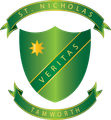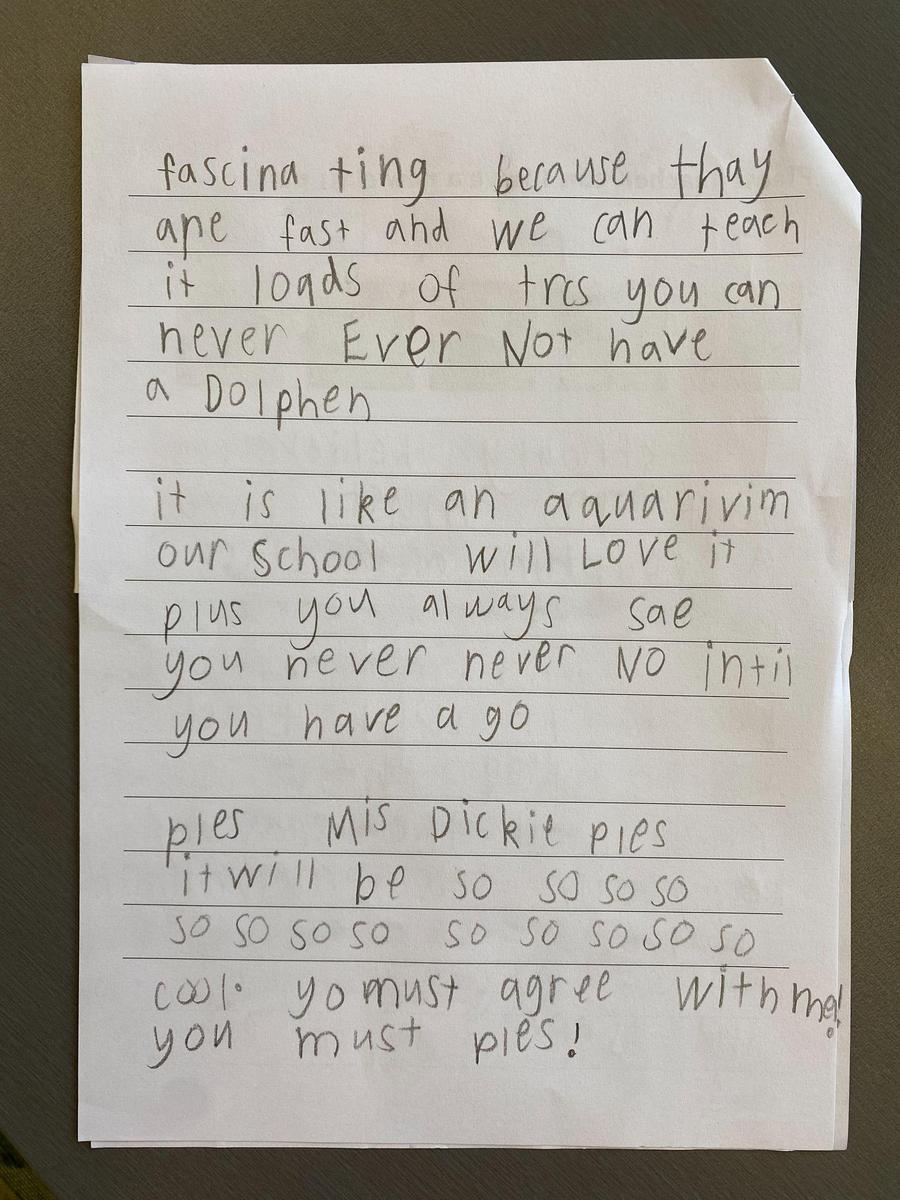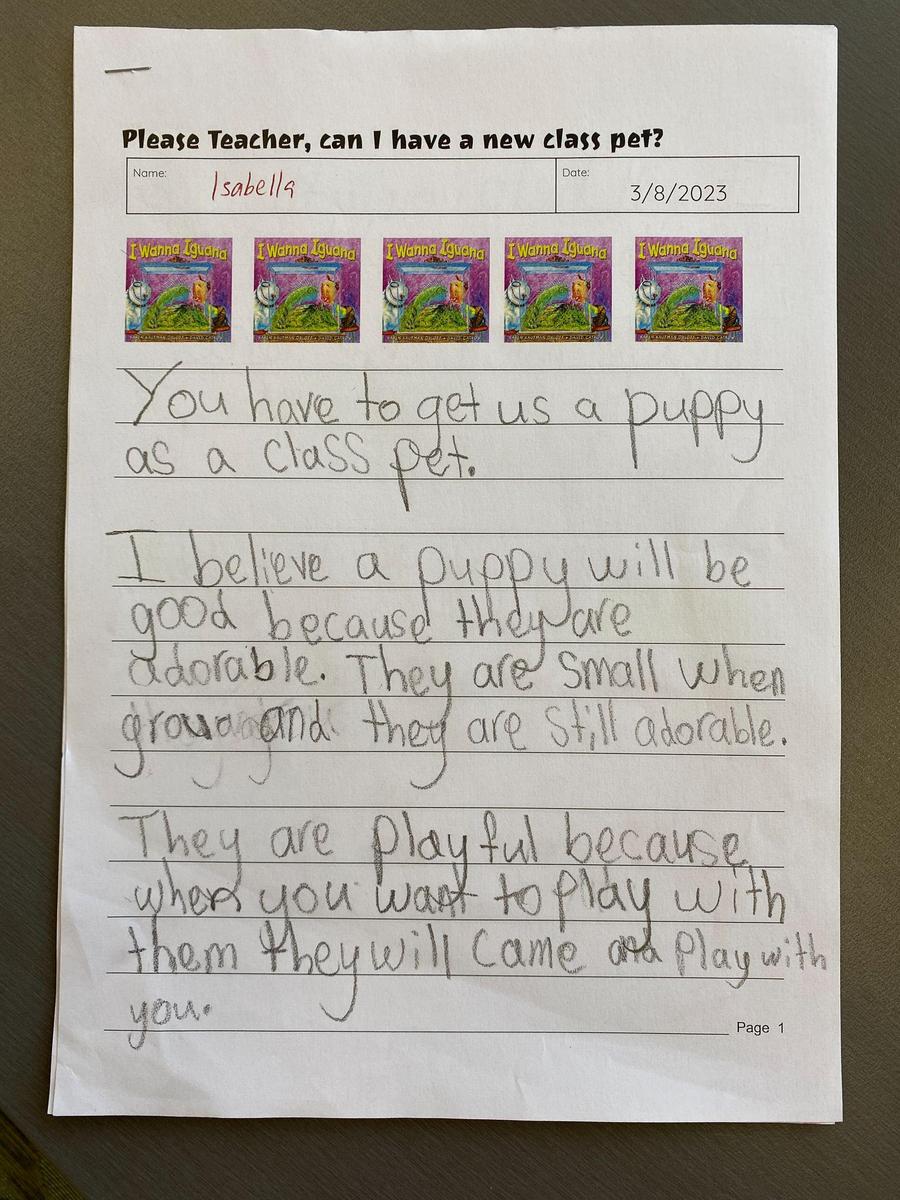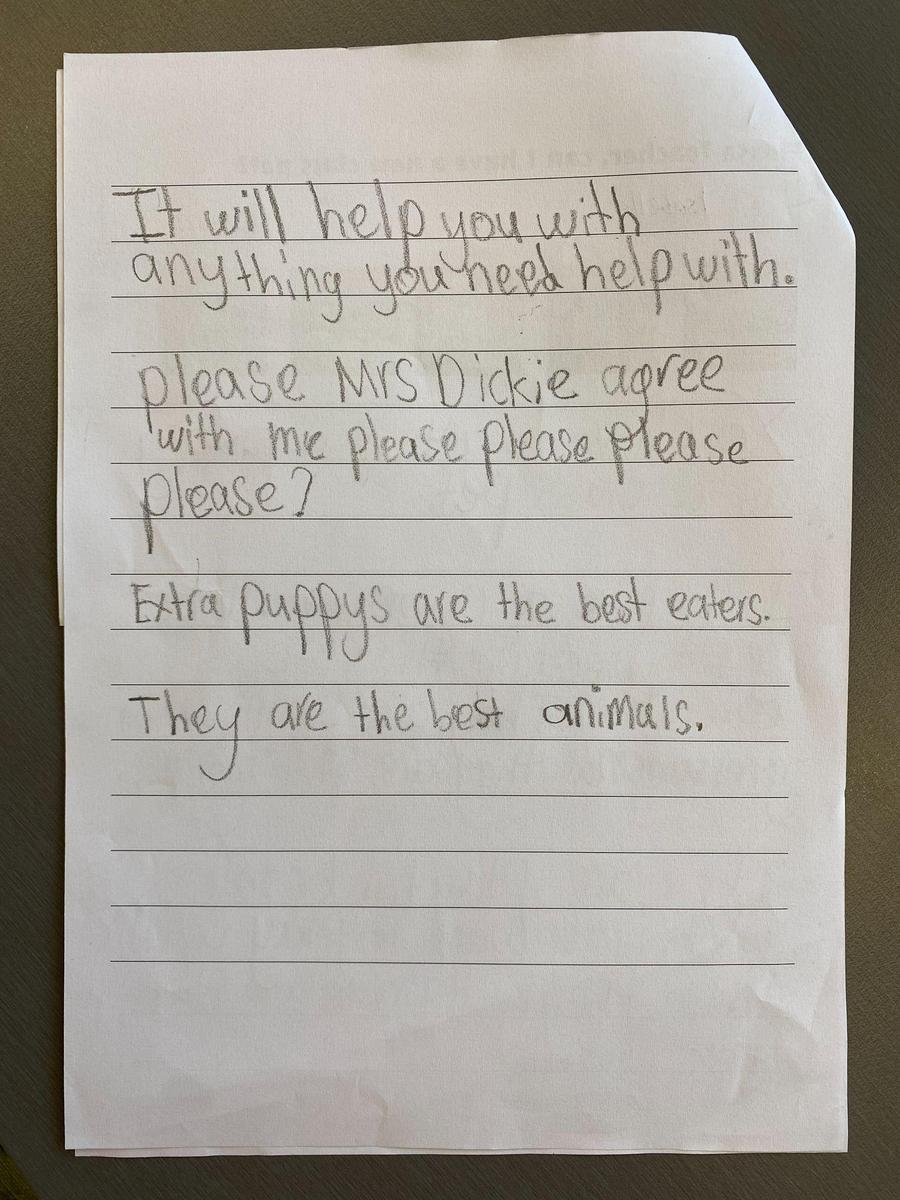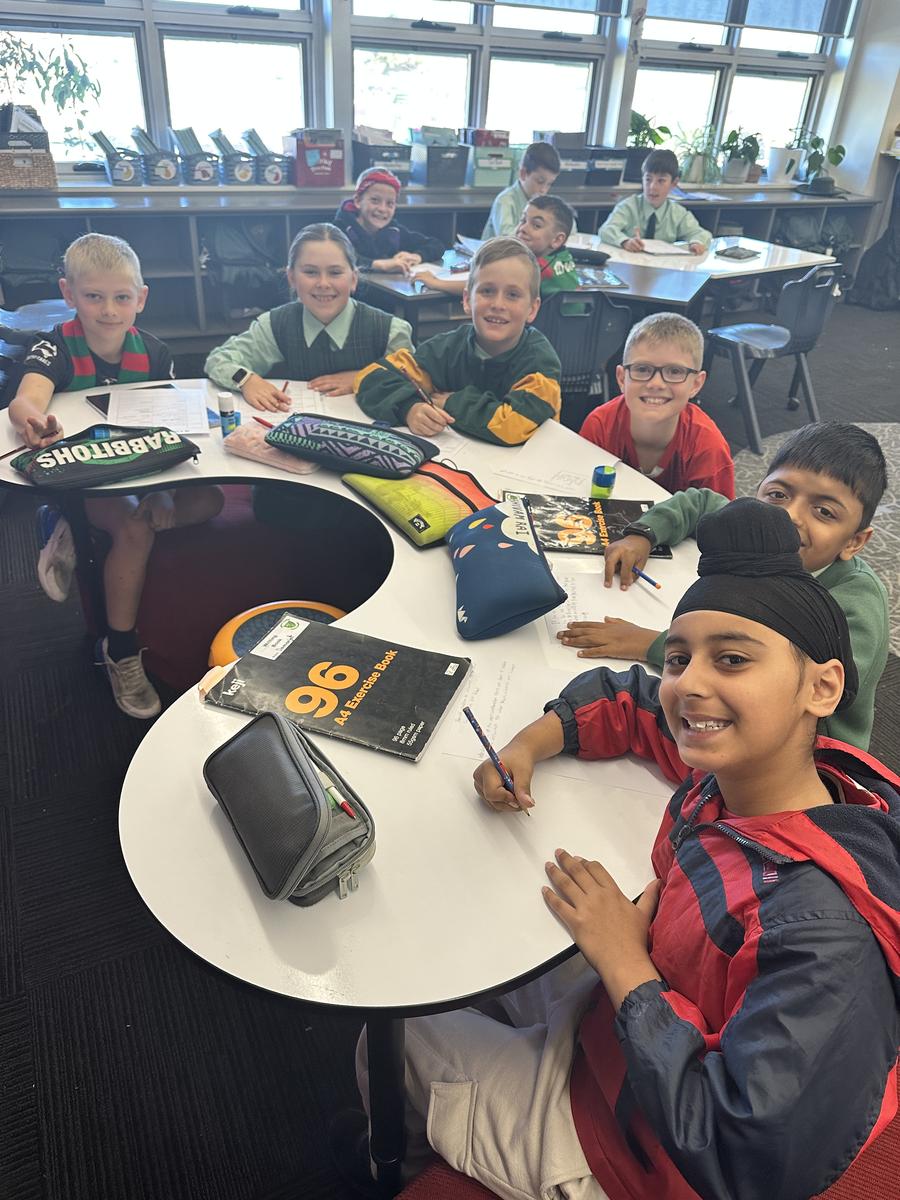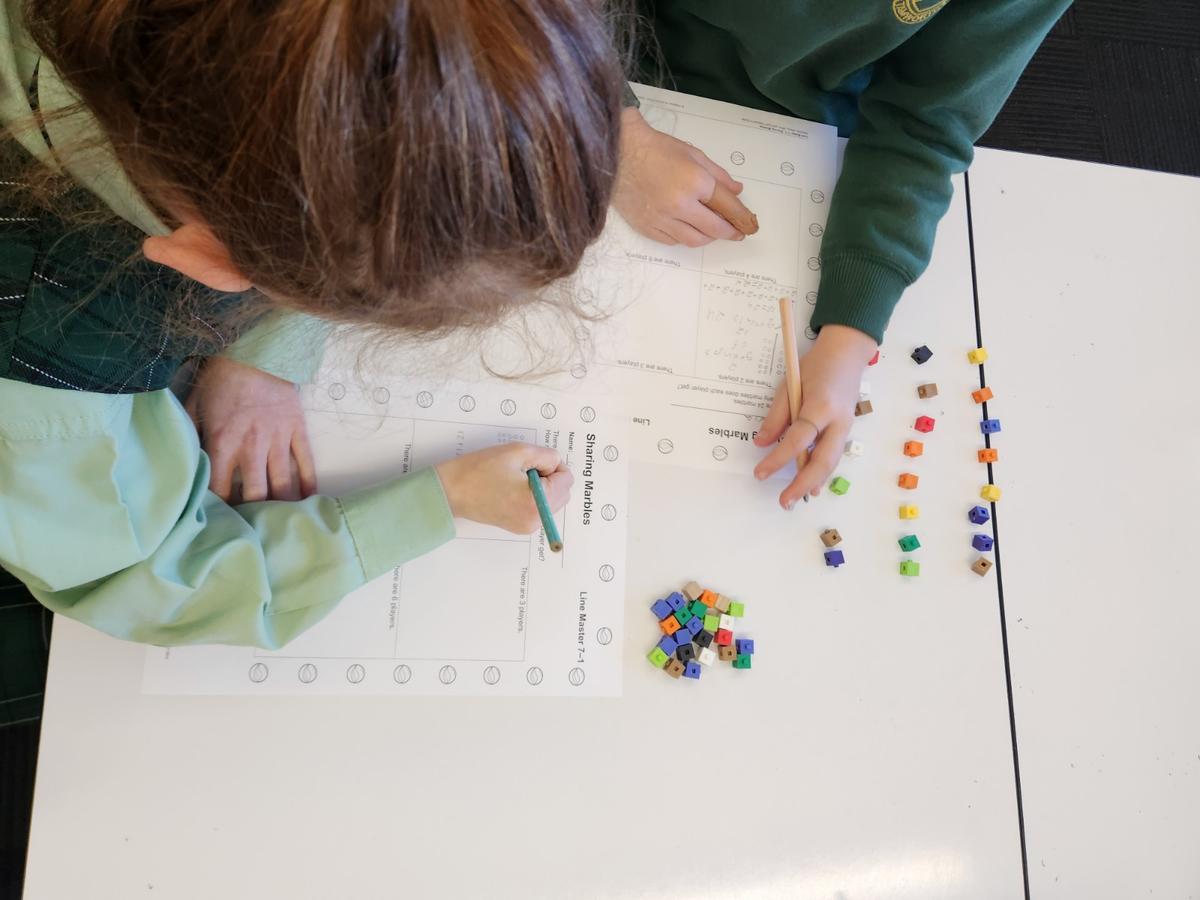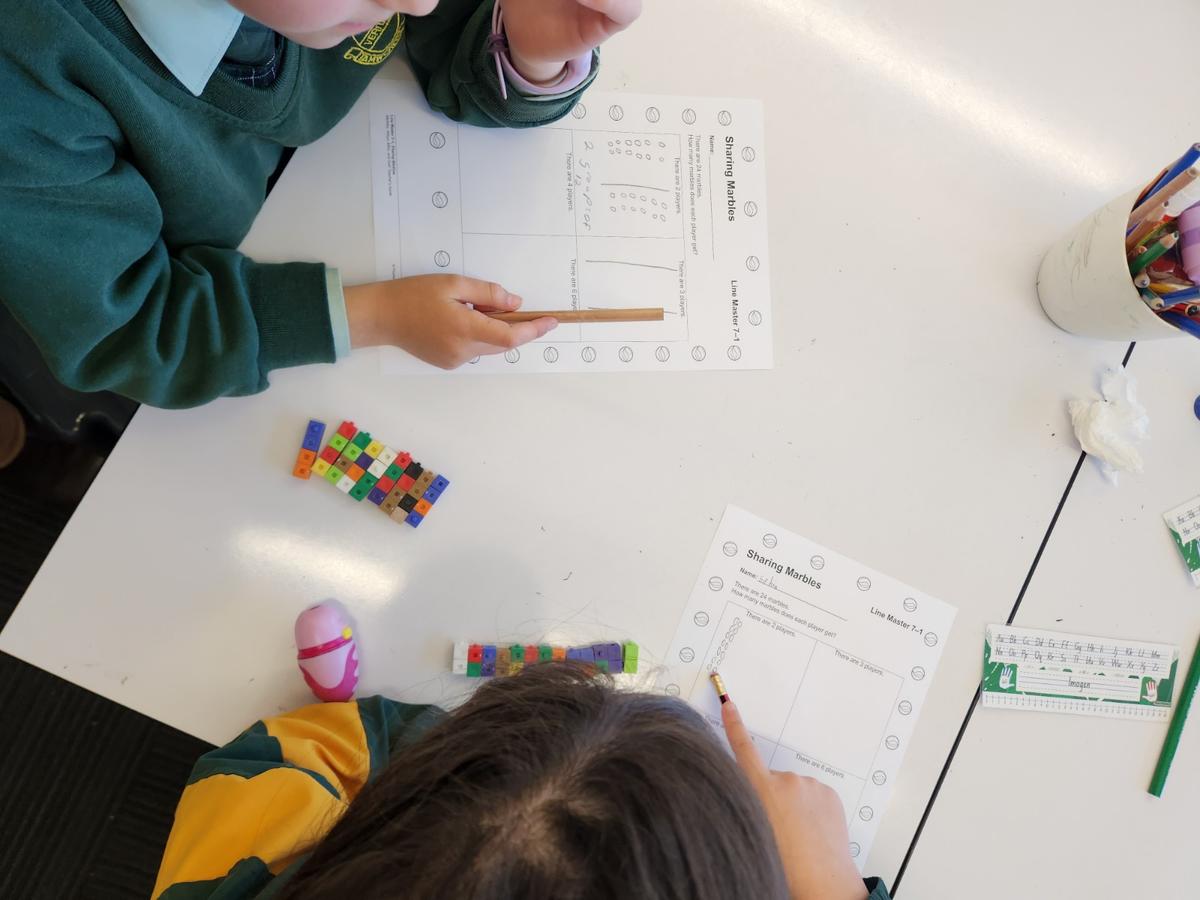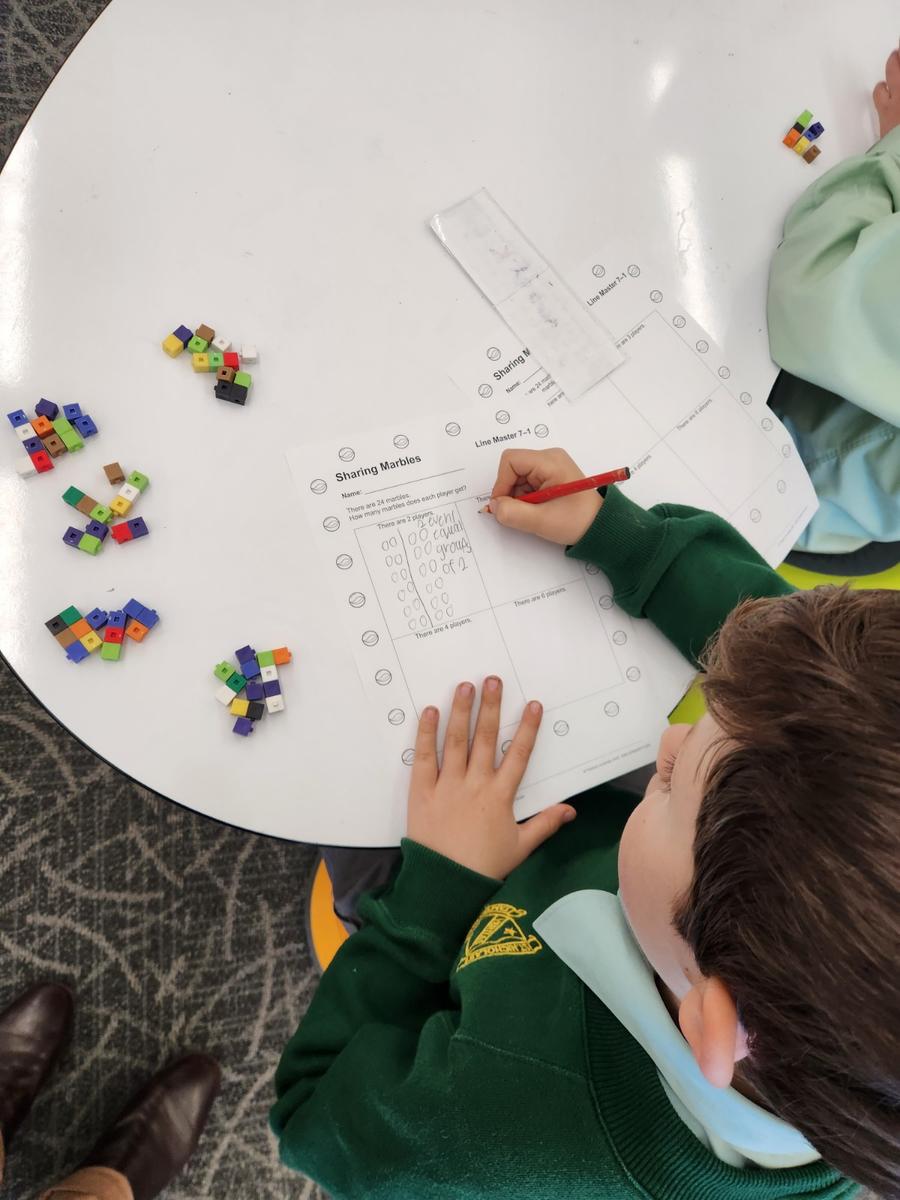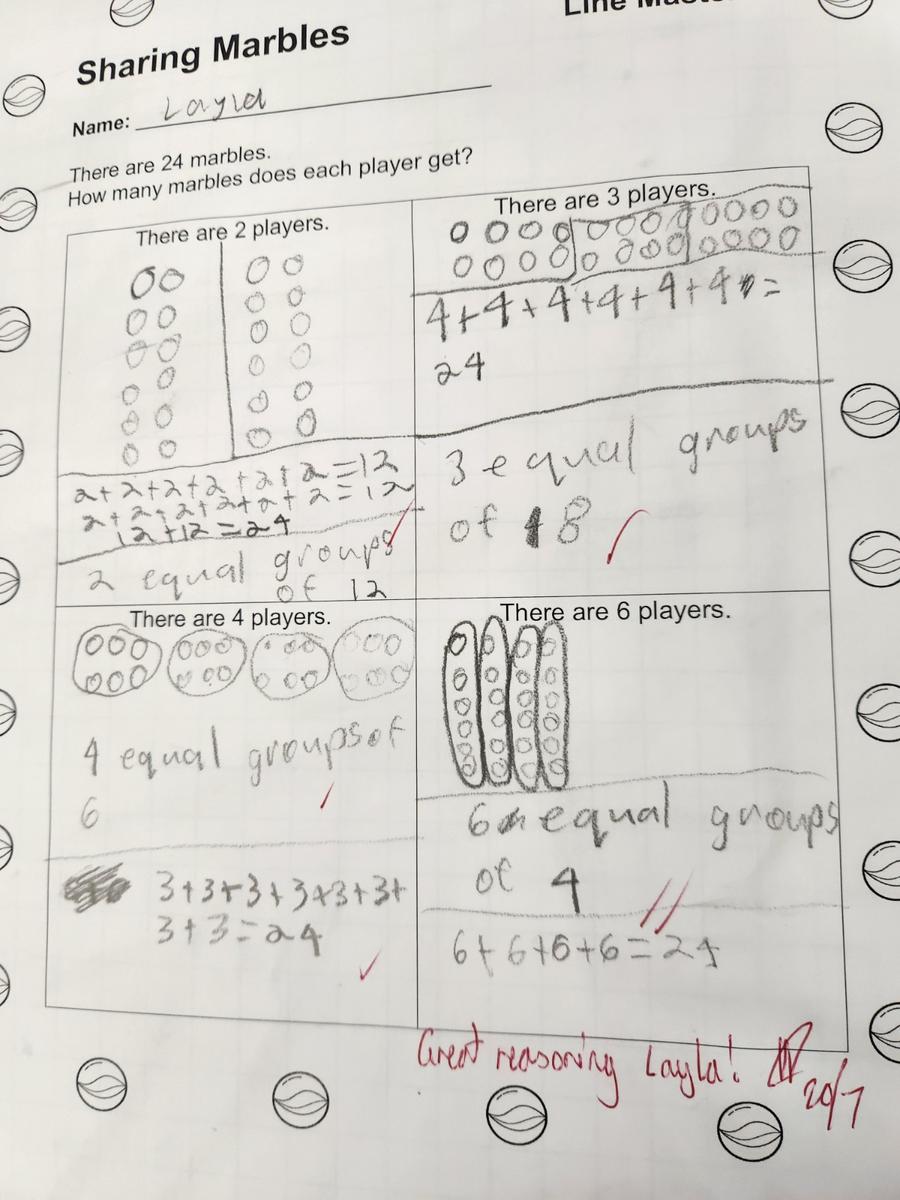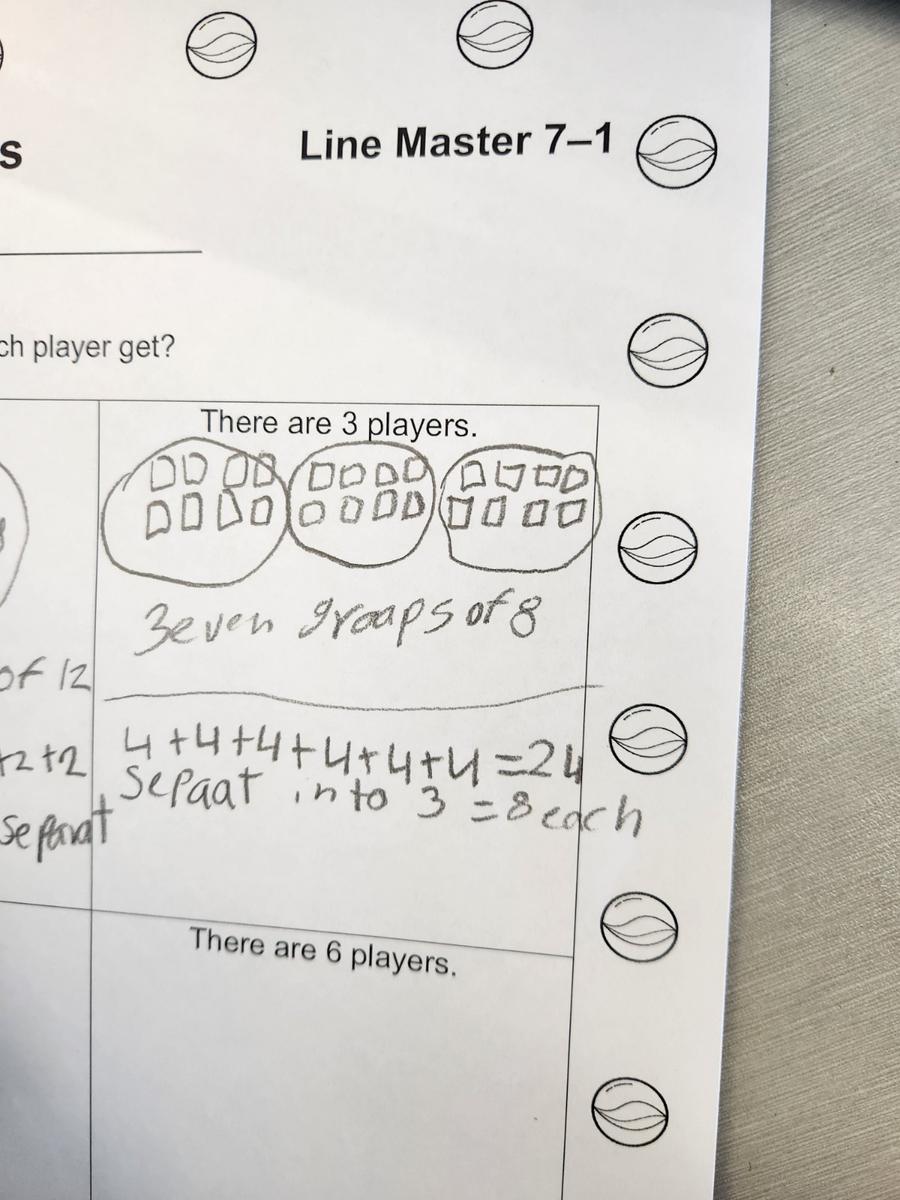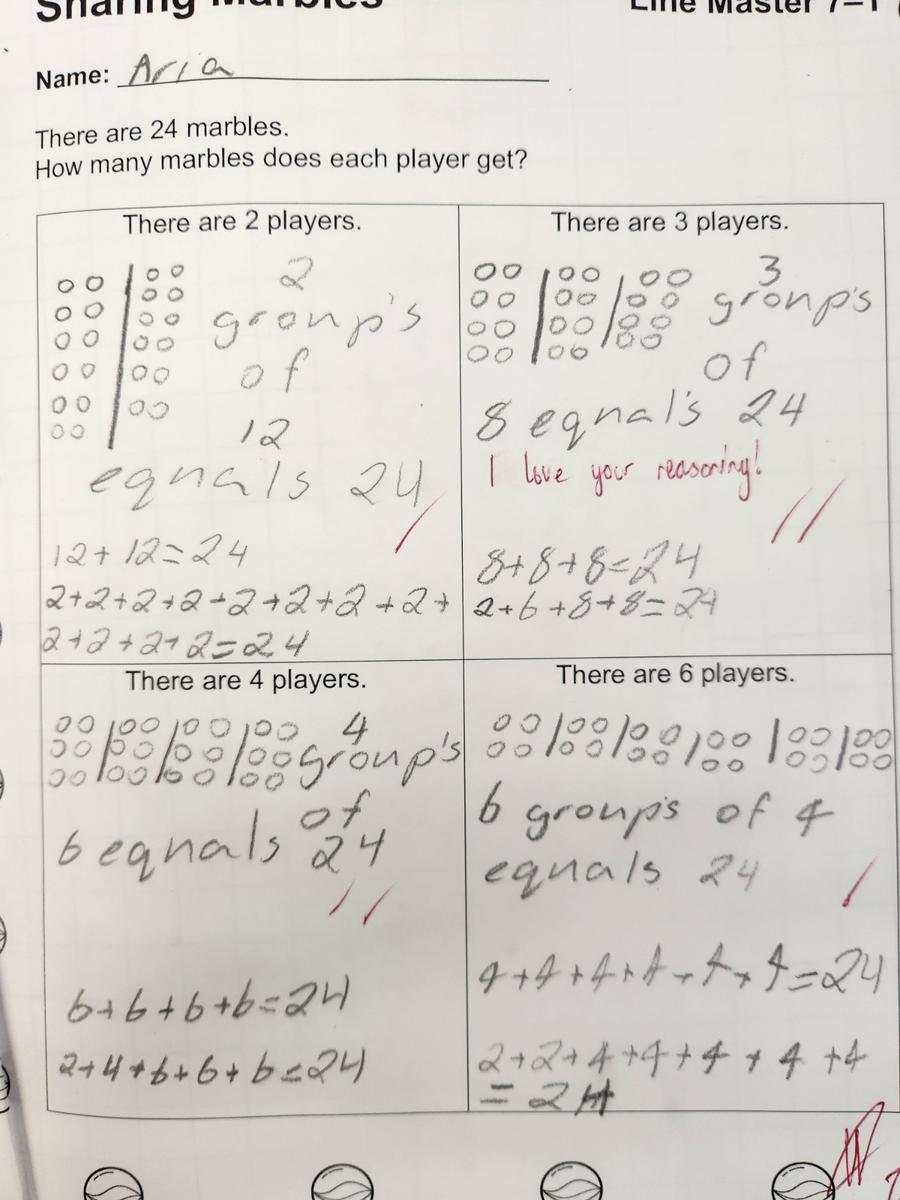
SPOTLIGHT
YEAR 1 SPOTLIGHT
Last week, Year 1 students showcased their persuasive writing skills by writing a letter to their teacher persuading them to get an interesting animal as the Year 1 class pet! The students used some wonderful emotive language and some convincing arguments in why we should have a variety of animals as class pets. Unfortunately, Mr Clery has not agreed to let Year 1 have an axolotl, manta ray or dolphin …. Yet!
Have a read at some of our wonderful work below:
On Tuesday, Year 1 students were very excited to receive a letter in the post.
This letter was from the Matilda’s - the Australian Soccer Team!!!
This was the letter we received:
The Matilda’s needed our help!
Year 1 absolutely loved this challenge and happily put on their mathematician hats and used their knowledge of area to design a training space for the athletes. The students blew us away with their knowledge of how area is used in everyday life. We will continue to explore area in weeks 4 and 5.
Year 1 teachers have a special surprise in the works for the students so stay tuned and keep an eye out for a compass attendance request!
YEAR 4 GRADE SPOTLIGHT
Writing in Year 4!
We started this term learning about the text type Description. We tried to use our senses to help us be able to create a clear picture in the reader's mind. During our Guided Reading Rotations one of our ‘rich tasks’ was to describe some of the characters from our novel study: Charlie and the Chocolate Factory.
Please have a look at some of the examples:
Charlie Bucket (Description)
Charlie is a skinny, smart young boy who lives in a cold, run-down wooden shack located on the outskirts of town. He lives with his parents and all four elderly grandparents. His love of chocolate is incredibly enormous. Charlie’s family is very poor, so poor that his singular birthday present consists of a Wonka bar to be shared amongst the seven family members. Like the rest of the countryside, Charlie is attempting to locate one of the five Golden Tickets to Mr Wonka’s factory. As he walks past the tall, rusty gates of the factory daily the scrumptious smell of melting chocolate is enough to make him pause and take it in.
Good luck, Charlie!
Grandpa Joe (Description)
Grandpa Joe is a wise old man who lives in a cold, rundown wooden hut. He lives with his wife Grandma Josephine and wonderful grandson, Charlie. Grandpa Joe used to work in Willy Wonka’s Chocolate Factory and has a burning desire to show Charlie just how magnificent the factory really is beyond the gates. Grandpa Joe is ninety-six and a half years old and hasn’t been out of bed for the past twenty years. Will Charlie winning a Golden Ticket be the reason that this all changes…
Wonka's Golden Tickets (Description)
If you are lucky enough to be one of the five lucky Golden Ticket Winners you will have discovered that they are printed on what appears to be real, pressed gold. The tickets glisten in the iridescent sunlight, taking your breath away. Each letter has been etched into the reverse of the magical ticket. It smells of delicious, melted chocolate.
The past week has seen us move on to learning about Discussions. We have been compiling a list of ‘Sizzling Starts’ that will help us with future writing. Have a look at our sensational Openers here:
| After considering both sides of the arguments… | In addition too… |
| In order to decide whether… | In conclusion… |
| Traditionally… | However… |
| It would be a difficult decision… | When considering… |
| One of the most controversial issues… | For many reasons… |
| One of the main reasons why… | Furthermore… |
| Another benefit… | It is obvious that… |
| In my personal opinion… | This is clear… |
| There are many arguments for and against... | There are two sides to this issue. |
| On the other hand.. | One of the most notorious (important) issues… |
We are looking forward to the weeks ahead and the fun learning that we have planned with Year 4.
MaST
CPA Model in Mathematics
As part of the MaST program and the implementation of new NSW Mathematics Syllabus at St Nicholas, staff and students have begun to engage with the CPA model. CPA stands for concrete, pictorial, abstract and is a researched backed approach to explaining and learning a wide range of mathematical concepts. All St Nicholas staff received professional development on this strategy from mathematics consultant Tracey Hughes Butters during Catholic Schools Week in Term 2.
Concrete learning is the most physically active part of learning and involves students playing and working with mathematical equipment to explore a new concept or solve problems. It allows students to use equipment they are familiar with and that generally give a sense of quantity, shape or area tied closer to real-life than pictorial or abstract representations.
Here, we encourage students to move from manipulating concrete mathematical equipment to sketching representations and then on to familiar drawn models, such as bar models and part-whole models. By moving through various forms of pictorial representation, often blended with concrete equipment or abstract representations, students are able to draw and reinforce the conceptual links between physical objects, sketches, jottings and abstract mathematics.
Abstract is the “symbolic” stage, where students use abstract symbols to model problems. Students will not progress to this stage until they have demonstrated that they have a solid understanding of the concrete and pictorial stages of the problem.
Year Two have been learning about forming groups and the pictures below are an example of students exhibiting this progress of learning through the use of the CPA model.
